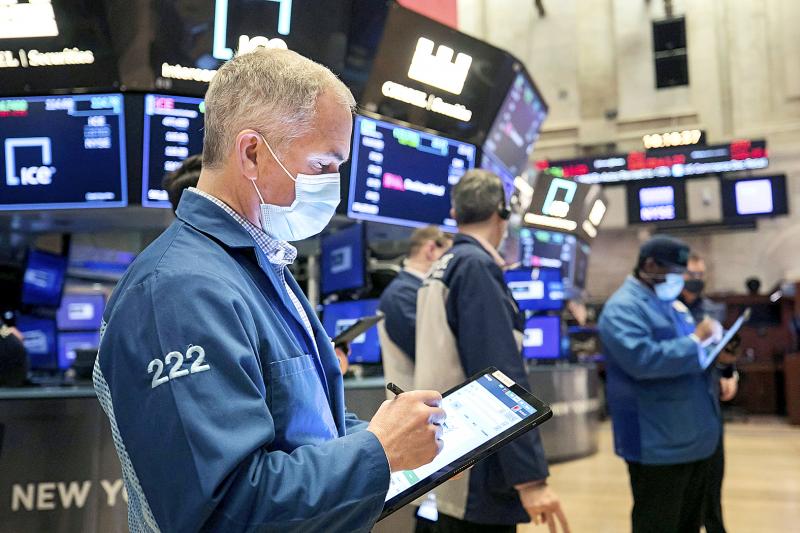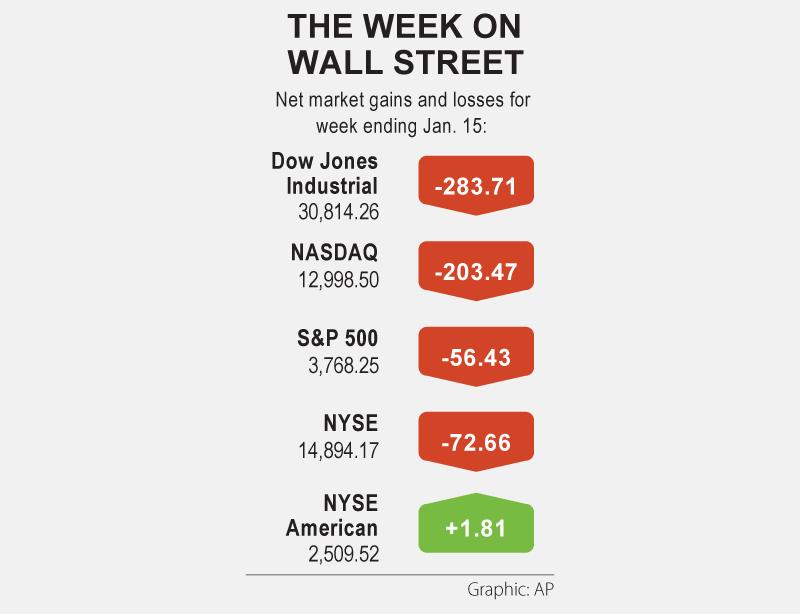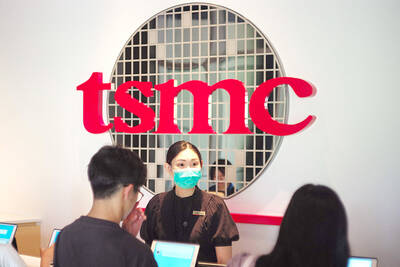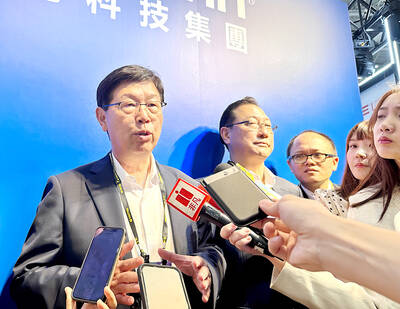Wall Street’s main indices on Friday finished lower, weighed down by big US banks after their earnings reports, while the energy sector fell sharply due to a regulatory probe into Exxon Mobil Corp.
The S&P 500 banks index lost ground as shares of Wells Fargo & Co, JPMorgan Chase & Co and Citigroup Inc tumbled even though they had posted better-than-expected fourth-quarter profits. The bank sector had rallied sharply in the past few days.
Wells Fargo, down 7.8 percent, was among the biggest drags on the S&P 500, along with Exxon Mobil, down 4.8 percent.

Photo: AP
“Financials and energy have been disappointing ... that’s bringing down the whole market,” said Chris Zaccarelli, chief investment officer at Independent Advisor Alliance in Charlotte, North Carolina.
“This year is the year for financials, energy, materials, industrials. So if there is a day when they’re not leading, it’s not good news for the market,” Zaccarelli said.
Wall Street’s major indices had recently hit record highs on hopes for a hefty fiscal stimulus package.

US president-elect Joe Biden late on Thursday unveiled a US$1.9 trillion stimulus proposal, which included about US$1 trillion in direct relief to households.
Meanwhile, data showed a further decline in US retail sales last month, in the latest sign the economy lost considerable speed at the end of last year.
“The weaker-than-expected economic data, and especially in parts of the economy like retail sales, is a big driver,” Charles Schwab chief investment strategist Liz Ann Sonders said.
“We are seeing sentiment through last week in extreme speculative frothy euphoric optimistic territory,” she said. “Sometimes it doesn’t need a catalyst before it begins to fall on its own weight.”
The Dow Jones Industrial Average fell 177.26 points, or 0.57 percent, to 30,814.26, the S&P 500 lost 27.29 points, or 0.72 percent, to 3,768.25 and the NASDAQ Composite dropped 114.14 points, or 0.87 percent, to 12,998.5.
For the week, the S&P 500 fell 1.48 percent and the NASDAQ fell 1.54 percent, while the Dow lost 0.91 percent.
Earnings for S&P 500 companies are expected to decline 9.5 percent annually in the final quarter of last year, but are expected to rebound this year, with a gain of 16.4 percent projected for the first quarter, Institutional Brokers’ Estimate System data from Refinitiv showed.
Exxon shares fell after a report said that the US Securities and Exchange Commission launched an investigation of the oil major, following a whistle-blower’s complaint that it overvalued a key asset in the prolific Permian shale oil basin.
Declining issues outnumbered advancing ones on the NYSE by a 2.2-to-1 ratio; on the NASDAQ, a 2.24-to-1 ratio favored decliners.
The S&P 500 posted 10 new 52-week highs and no new lows; the NASDAQ Composite recorded 169 new highs and seven new lows.
On US exchanges, 14.12 billion shares changed hands on Friday compared with the 12.76 billion average for the past 20 sessions.

Taiwan Transport and Storage Corp (TTS, 台灣通運倉儲) yesterday unveiled its first electric tractor unit — manufactured by Volvo Trucks — in a ceremony in Taipei, and said the unit would soon be used to transport cement produced by Taiwan Cement Corp (TCC, 台灣水泥). Both TTS and TCC belong to TCC International Holdings Ltd (台泥國際集團). With the electric tractor unit, the Taipei-based cement firm would become the first in Taiwan to use electric vehicles to transport construction materials. TTS chairman Koo Kung-yi (辜公怡), Volvo Trucks vice president of sales and marketing Johan Selven, TCC president Roman Cheng (程耀輝) and Taikoo Motors Group

Among the rows of vibrators, rubber torsos and leather harnesses at a Chinese sex toys exhibition in Shanghai this weekend, the beginnings of an artificial intelligence (AI)-driven shift in the industry quietly pulsed. China manufactures about 70 percent of the world’s sex toys, most of it the “hardware” on display at the fair — whether that be technicolor tentacled dildos or hyper-realistic personalized silicone dolls. Yet smart toys have been rising in popularity for some time. Many major European and US brands already offer tech-enhanced products that can enable long-distance love, monitor well-being and even bring people one step closer to

RECORD-BREAKING: TSMC’s net profit last quarter beat market expectations by expanding 8.9% and it was the best first-quarter profit in the chipmaker’s history Taiwan Semiconductor Manufacturing Co (TSMC, 台積電), which counts Nvidia Corp as a key customer, yesterday said that artificial intelligence (AI) server chip revenue is set to more than double this year from last year amid rising demand. The chipmaker expects the growth momentum to continue in the next five years with an annual compound growth rate of 50 percent, TSMC chief executive officer C.C. Wei (魏哲家) told investors yesterday. By 2028, AI chips’ contribution to revenue would climb to about 20 percent from a percentage in the low teens, Wei said. “Almost all the AI innovators are working with TSMC to address the

FUTURE PLANS: Although the electric vehicle market is getting more competitive, Hon Hai would stick to its goal of seizing a 5 percent share globally, Young Liu said Hon Hai Precision Industry Co (鴻海精密), a major iPhone assembler and supplier of artificial intelligence (AI) servers powered by Nvidia Corp’s chips, yesterday said it has introduced a rotating chief executive structure as part of the company’s efforts to cultivate future leaders and to enhance corporate governance. The 50-year-old contract electronics maker reported sizable revenue of NT$6.16 trillion (US$189.67 billion) last year. Hon Hai, also known as Foxconn Technology Group (富士康科技集團), has been under the control of one man almost since its inception. A rotating CEO system is a rarity among Taiwanese businesses. Hon Hai has given leaders of the company’s six